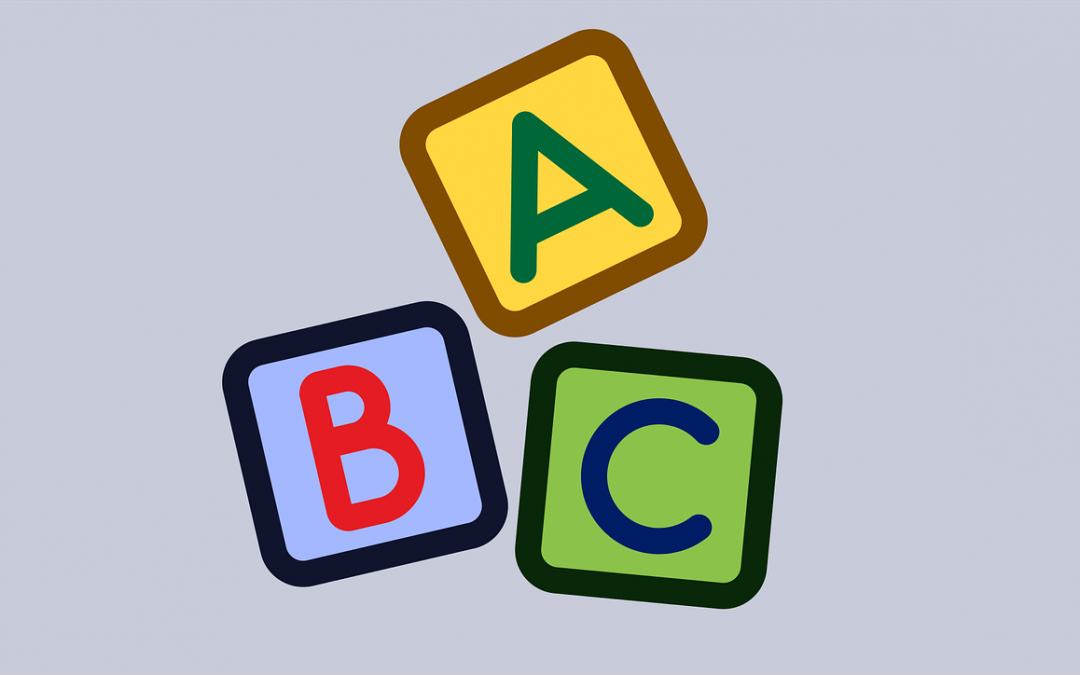Understanding Phonics
Phonics is an approach or method of teaching literacy skills that focuses on matching letters to the sounds they make. A big focus of phonics is “decoding” – the idea that letters or groups of letters represent sounds through a “code”, that can be learned by teaching letter-sound patterns. Children are taught to decode or “unpack” a word that they see by extracting each of the corresponding sounds, and then blending them together to make a word.This is the “b says buh” approach, and this is where the “sound it out” strategy lives. It is a “bottom-up” or feature-level approach – literacy is taught at a level below the whole word; that is, by looking at letters or small groups of letters, and pairing them with the corresponding sound, and then sequentially unpacking each sound and putting them together to make a word. Hopefully, the word that gets created is recognized by the brain.
Understanding Research
Research indicates that phonics instruction improves children’s ability to identify words, and is effective for teaching children to read at the word level. It teaches children the alphabetic code and gives them strategies to approach or “attack” new or unfamiliar words.
It is especially useful in the early years of reading instruction. However, it should be noted that phonics instruction MUST be both systematic and explicit to be effective. Note that listening to songs about letter/sounds or having children see letters as cartoons is NOT explicit!
It must be noted that phonics is NECESSARY for children to learn to read. In fact, as adults, we use phonics skills to decode whenever we encounter a new or unfamiliar word. However, phonics alone is NOT SUFFICIENT for children to learn how to read. If it was, Hooked on Phonics would be the only program used in schools!
Literacy Practices Calgary
Understanding Shortcomings:
While decoding is necessary for reading, not all words can be decoded. Many words do not “play fair” in that their spelling is not a phonetic match. For example, the words “would” and “laugh” cannot be solved through decoding skills or “sounding out” strategies. These words must be learned and stored within the visual system. Further, the visual representation that is stored my connect with and be integrated within the meaning/language system. The phonics approach is not set up to address the automatic learning and retrieval of these types of words.
 Additionally, addressing words from a letter-up approach really slows fluency and automatic recognition of words. It is a slow method of reading that must be transcended to move to a more fluent level of mastery, much like a developmental stage. If decoding is the only strategy being used to read, it is very likely comprehension will suffer.
Additionally, addressing words from a letter-up approach really slows fluency and automatic recognition of words. It is a slow method of reading that must be transcended to move to a more fluent level of mastery, much like a developmental stage. If decoding is the only strategy being used to read, it is very likely comprehension will suffer.
We may see this in young children with Autism – they have recognized and acquired many of the patterns of letter/sound correspondence, and can “sound out” whole books. However, they are not activating the meaning that would lead to comprehension. They do not understand what it is they are reading aloud.
The purpose of reading is to comprehend what is on the page. To read, you must be able to recognize words on a page and quickly activate and retrieve the meaning of the word, and then connect that word to the adjacent words in a sentence. There is not a focus on the meaning of words in the phonics approach, and words are typically encountered by themselves rather than in sentences, such that sentence structure and association skills are not developed.
It is worth noting that phonics has taken on a negative “Black Sheep” connotation, like a misunderstood child. To date, there is more research supporting the use of phonics instruction than there is for a Whole Language approach. Yet, it is often maligned, diminished, marginalized, and devalued in conversations about literacy instruction. As such, the phonics component is under-represented in many school systems. Often phonics is added in as a “patchwork” component to literacy instruction, and as such it is not integrated in a systematic and explicit way. This is a grave mistake, ESPECIALLY for those with language disorders, learning disabilities, or dyslexia.
In sum, phonics is necessary, but not sufficient, to be able to learn how to read. This approach teaches children to unpack or decode words, and sets the foundation for word recognition. However, it is not effective for addressing irregular spellings, and does not allow children to internalize and store words in an integrated way across brain areas. This approach is limited in its ability to develop reading comprehension across written text.
Phonics MUST be a part of an effective literacy instructional plan, and quite often intervention for struggling readers means going back and teaching these skills in a structured, explicit way. However, phonics must be integrated with other instructional techniques; it cannot be taught in isolation.
Think your child may have reading problems? For more information contact us now!

